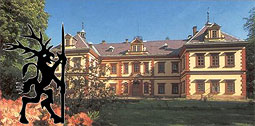History of the Town
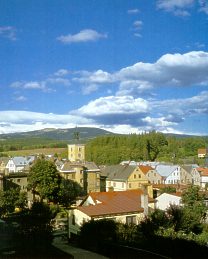
The town Jilemnice is situated in a mountainous area of west foothills of Krkonose (the town square is located 464 metres above the sea level) and has around 6000 inhabitants today. The town has been for many years a very popular as an advantageous setting-off point for the West Krkonose, and thus has become their natural centre during a historic development.
Jilemnice was established sometimes at the beginning of the 14th century as an economic centre of an extensive Stepanice demesne held by the Valdstejn lineage. Unfortunately, the historic sources do not allow an uninterrupted look into the older history of the town, for the majority of sources was destroyed mainly through fire. The regular ground plan of the town square and of the adjacent streets seems to indicate that the town was probably founded on a green turf. Because of the secluded location, the town seems to have developed in a slower pace than other serfdom towns in populated and fertile inland. But then it appears that the secluded position protected the town for years against serious war damage. The town development was even more restricted from 1492 when Valdstejns have divided the town and the demesne into two individual parts.
We can find first references to Jilemnice mines from the 15th century; in the following century we can locate remarks about a highly developed linen industry.
Events of the Thirty Years' War have not affected our area till 1634 when the town was burnt by the Swedes. In spite of that the war's consequences were disastrous for the town and its surroundings. Jilemnice lost the major part of its economic background, trade links were severed for many years. The town was impoverished to such an extent that the construction of a small wooden school in 1638 and again in 1683 required the co-operation of both parts of then divided municipality and the sale of certain parts of the municipal property. The trade was weakened during the whole 17th century, the local linen was not able to win recognition on a wider than a local scale. Also the attempts to restore the local mining of ore were unsuccessful.
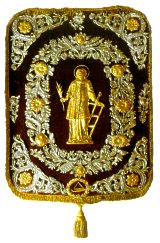 A sweeping turn for the better did not come until the year 1701, when both parts of the demesne were reunited together with the town in the hands of one owner - the count's dynasty of Harrachs, whose members were known for their flexible and progressive economic policy.
A sweeping turn for the better did not come until the year 1701, when both parts of the demesne were reunited together with the town in the hands of one owner - the count's dynasty of Harrachs, whose members were known for their flexible and progressive economic policy.
At first the new owners lifted to the world standard the local glass and linen industries. They imported linseeds of greater quality from abroad and simultaneously invited experienced foreign specialists to teach the locals better techniques for linen processing. The biggest drawback of local linen was its final processing. That is the reason why the Harrachs founded a number of bleaching plants (the closest in Jilemnice - Hrabacov), which supplied waste successfully used in agriculture as the first artificial fertiliser, and consequently helped in a significant way to raise the economic level of farming. The linen manufacturing in Jilemnice achieved its highest recognition in the second part of the 18th century and at the beginning of the 19th century, when superb batiste, veils and other goods of the highest quality had been woven here. The acquired fame of the local goods stretched far beyond the border of the Austrian monarchy. For that matter, the Krkonosske museum in Jilemnice has in its collections samples of hand made yarn from the beginning of the 19th century. 296 metres of this yarn weighs only one gram!! To this day it is the finest flax yarn in the world.
The linen was processed partly in homes of the workers and partly in the count's manufactures (the closest in Jilemnice -Hrabacov). Also the inhabitants of Jilemnice were venturing into the linen business and especially the trade was bringing them a large profit. All this had a fast significant impact on the appearance of the town. The old single storey timbered houses were giving way to more splendid timber buildings, even first houses made of bricks appeared during this period. Likewise the number of inhabitants grew quickly. The affluence of the town can be seen up to now in a number of baroque statues in the streets of the town and in the square, and namely in the monumental baroque architecture and the valuable equipment of the St. Vavrinec church.
The enhanced building activity together with the developing manufacturing business had its drawbacks as well. Pernicious fires were increasing in number and especially devastating effects had the fires in 1788, 1803, 1838; these fires were responsible for significantly changing the character of the town and were the major force in compelling people to build from bricks and stone. During the biggest from the above mentioned fires in 1783, 114 houses in Jilemnice were completely destroyed by the fire and a number of others had to be brought down due to the extensive damage.
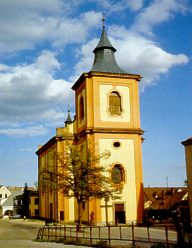 During the first half of the 19th century the linen industry was slowly declining. The textile business was increasingly under the control of a modern large scale factory production, in which Jilemnice was unable to win a greater recognition and therefore the promising development started in the 18th century was stagnating. Only in the second half of the century the business in the town started to increase.
During the first half of the 19th century the linen industry was slowly declining. The textile business was increasingly under the control of a modern large scale factory production, in which Jilemnice was unable to win a greater recognition and therefore the promising development started in the 18th century was stagnating. Only in the second half of the century the business in the town started to increase.
During the 19th century Jilemnice, which has been from the time of its foundation occupied by Czech inhabitants, starts to wake up to a national consciousness. This development can be clearly visible especially after the fall of Bach's absolutism when Jilemnice becomes the centre of Czech inhabitants in Krkonose.
With the improvement of travel conditions tourism begins to develop (namely after the construction of important railway links). In this connection we cannot overlook the pioneering efforts of the directing teacher from Dolni Stepanice Jan Buchar, who was an enthusiastic popularizer of Krkonose. It was him who realised first how important can be the economic contribution of a flood of tourists from inland for the local inhabitants. At that time Jilemnice started to develop as a pleasant setting-off point for Krkonose.
Another famous Jilemnice's tradition - skiing - is also connected with the name of Jan Buchar. Skis were brought here by the count Jan Harrach for his forest workers in the winter of 1892. Although these were not the first skis in Czech lands (these were acquired by Josef Rossler Orovsky from Prague in 1887), skiing has become very fast so popular among all groups of inhabitants that Jilemnice has developed into the most important Czech skiing centre, for sure rightly called "the cradle of the Czech skiing". The competitive skiing has developed together with the practical use of skis. Already in 1893 the local skiers have organised the first skiing outing and only a year later they have founded first independent ski club in the Czech countries and Slovakia "the Czech Krkonose Club Ski". This club has organised competitive skiing and together with the Prague Club they have played a very important role in the development of sport skiing. A number of great skiers has come from Jilemnice: only at random we would like to remember Bohumil Hanc who had come to a tragic end (1913), Jaroslav Cardal, Eva Paulusova, Stanislav Henych, Kveta Jeriova-Peckova etc. Jilemnice is still a place where great skiers originate from. Junior skiers are, apart from other ways, also reared in specialised classes of the local primary and high schools.
Jilemnice's schooling underwent an exceptional development in the second half of the 19th century. In addition to a significantly expanded network of primary schools, a textile high school was opened in 1873, which is operating to this day. In 1913 a high school was opened - it was the first high school in Krkonose where the teaching language was Czech.
The promising development of the town continued even in the period between the two world wars. It was only slowed down by the consequences of Mnichov agreement, which moved the state border to the close proximity of the town, and was the reason for stagnating economic links and also affected the tourism.
After 1945 the town went through notable changes. First and foremost the structure of industry has changed. Textile factories (today we can find Technolena a.s. Hybler a.s. here) were partly replaced by an engineering industry (today Ateso a.s. producing car accessories) and a food industry (Cutisin a.s., the only manufacturer of artificial casings in the Czech rep.). These changes were followed by a change in the structure of inhabitants.
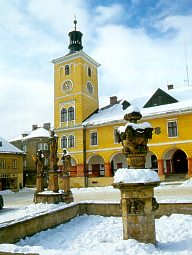 Despite of the fact that the town has remained the star-ting-off point for west Krkonose and every year millions of tourists have passed through Jilemnice, this advantage could not be made the most of in the previous political system and thus the town was slowly losing its pleasant character of a recreation resort. To restore this facade, to regenerate the valuable historic centre and to equip the town with everything that modern tourists need for their comfort is the paramount task of the current epoch.
Despite of the fact that the town has remained the star-ting-off point for west Krkonose and every year millions of tourists have passed through Jilemnice, this advantage could not be made the most of in the previous political system and thus the town was slowly losing its pleasant character of a recreation resort. To restore this facade, to regenerate the valuable historic centre and to equip the town with everything that modern tourists need for their comfort is the paramount task of the current epoch.
A number of leading and famous persons was born in Jilemnice: Frantisek Posepny, geologist of a world importance, the founder of world layer geology was born here in 1936. Josef Hanus (1878 - 1952) was known as an outstanding chemist -Hanus's medal is to this day awarded in his honour. Popular among the general public are the works of the writer Jaroslav Havlicek (1896 - 1943), who was one of our greatest epic poets creating in between the wars (The Invisible; Paraffin Lamps; Little Son; Barbora Hlavsova) and for whom Jilemnice remained the fountainhead of inspiration. Writer Jan Weiss (1892 - 1972) belongs among the founders of the Czech sci-fi literature (The House with Thousand Storeys; Sleeper in Zodiac). Zdenko Feyfar (1913) indelibly belongs into the history of the Czech artistic photography. The dominant place in his work belongs to his native Krkonose and Prague.
From not far away Vfchovska Lhota comes one of the greatest Czech realistic landscape painters Frantisek Kavan (1866 - 1941).
created by SYMPACT
Copyright © 2003 - 2010 Město Jilemnice
Masarykovo náměstí 82 | e-mail: posta@mesto.jilemnice.cz

Projekt „Zavádění CAF v Jilemnici“ číslo: CZ.1.04/4.1.01/53.00038. Tento projekt je financován z ESF prostřednictvím Operačního programu Lidské zdroje a zaměstnanost a státního rozpočtu ČR. Díky projektu pořídilo Město Jilemnice v roce 2011 tyto webové stránky.









